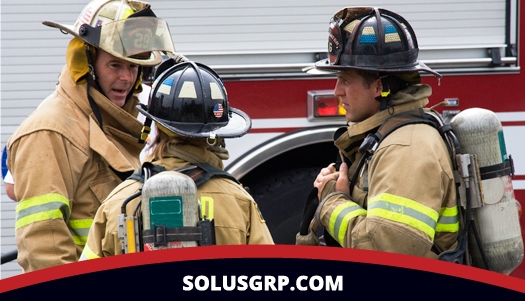We use cookies to make your experience better. To comply with the new e-Privacy directive, we need to ask for your consent to set the cookies. Learn more.
Protect Emergency Services Personnel During Waste Handling Tasks
Police, firefighters, EMTs, and other emergency services personnel handle the toughest jobs in our society. They shouldn't have to worry about the risks of waste handling, too. Simply taking out the trash may not seem like a dangerous task, especially for first responders who protect the populace from more direct threats. In fact, though, there are a range of risks that emergency services workers face in the course of day-to-day waste handling. These include:
- Increased risk of musculoskeletal disorders- It would be a supreme irony for the firefighter who bravely carries adults out of burning buildings to suffer a back injury while taking out the trash. But as the National Institute for Occupational Safety and Health (NIOSH) reports, trash removal can lead to musculoskeletal disorders associated with heavy lifting and awkward positions.
Raising a 30-pound trash can over the shoulders to reach the lip of a dumpster involves multiple ergonomic hazards, including twisting, lifting, and reaching. For police officers, firefighters, and EMTs who face injury as a general condition of the job, improving waste-handling ergonomics at the station is a worthwhile goal.
- Exposure to hazardous medical waste- Every worker in emergency services may have to handle medicines, needles, expired prescription drugs, or even controlled substances during their shift. It's vital for the health and safety of first responders to be able to deal with these materials safely, without unnecessary contact.
- Potential contact with allergens, toxins, or infectious agents- A 2014 literature review from the journal Safety and Health at Work points out that infectious diseases are the most frequent cause of workplace illness. Pathogens flourish in trash cans, where food waste and potentially infectious articles are discarded. Anyone who's been through a flu outbreak at the workplace knows how quickly illnesses can spread; imagine the chaos of a police department at half-capacity due to illness. Limit the risk by preventing exposure to pathogenic waste for all emergency services personnel. Of course, that's easier said than done — someone has to take out the trash.
Removing Waste-Handling Risks for Emergency Services Providers
An ergonomics study from the University of California provides a single, simple way to reduce the risks — all of them — associated with transporting waste to dumpsters or final disposal sites. The study focuses on the UC custodial staff, outlining ergonomic hazards and best practices to keep cleaning staff safe and injury-free.
In a section on handling trash, the study states:
"When the design of the trash enclosures or dumpster itself is such that the overall height of the dumpster is higher than 36 inches, or, if the trash is usually more than 25 pounds, use an automated dumping device."
The authors of this study were concerned solely with removing the ergonomic hazard, but for emergency personnel who face additional risks, an automated dumping device — specifically, a Bin Dumper from Solus Group — can prevent all of the above-listed hazards. Not only do these indoor/outdoor lift-and-tip devices effortlessly empty trash cans and other large-capacity containers, they protect workers from emptied contents with guard cages or translucent PET-G panels.
State, federal, and municipal emergency service departments can take advantage of Solus Group's GSA-approved status to purchase Bin Dumpers through the U.S. General Services Administration. Call Solus Group at 314-696-0200 to learn more.
References:
"Cleaning and Custodial Services." CDC. National Institute for Occupational Safety and Health, 4 June 2014. Web. 28 Feb. 2018.
"Musculoskeletal Health Program." CDC. National Institute for Occupational Safety and Health, 28 Feb. 2018. Web. 28 Feb. 2018.
Rim, Kyung-Taek and Cheol-Hong Lim. "Biologically Hazardous Agents at Work and Efforts to Protect Workers' Health: A Review of Recent Reports." Science Direct. Safety and Health at Work, June 2014. Web. 28 Feb. 2018.
UC System-wide Ergonomics Project Team. "Ergonomics Study of Custodial, Housekeeping, and Environmental Service Positions at the University of California." UCSC. University of California Santa Cruz, May 2011. PDF. 28 Feb. 2018.
